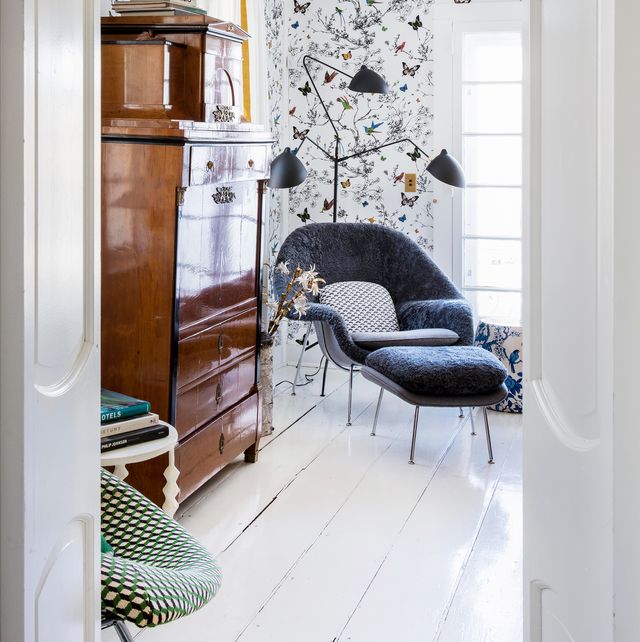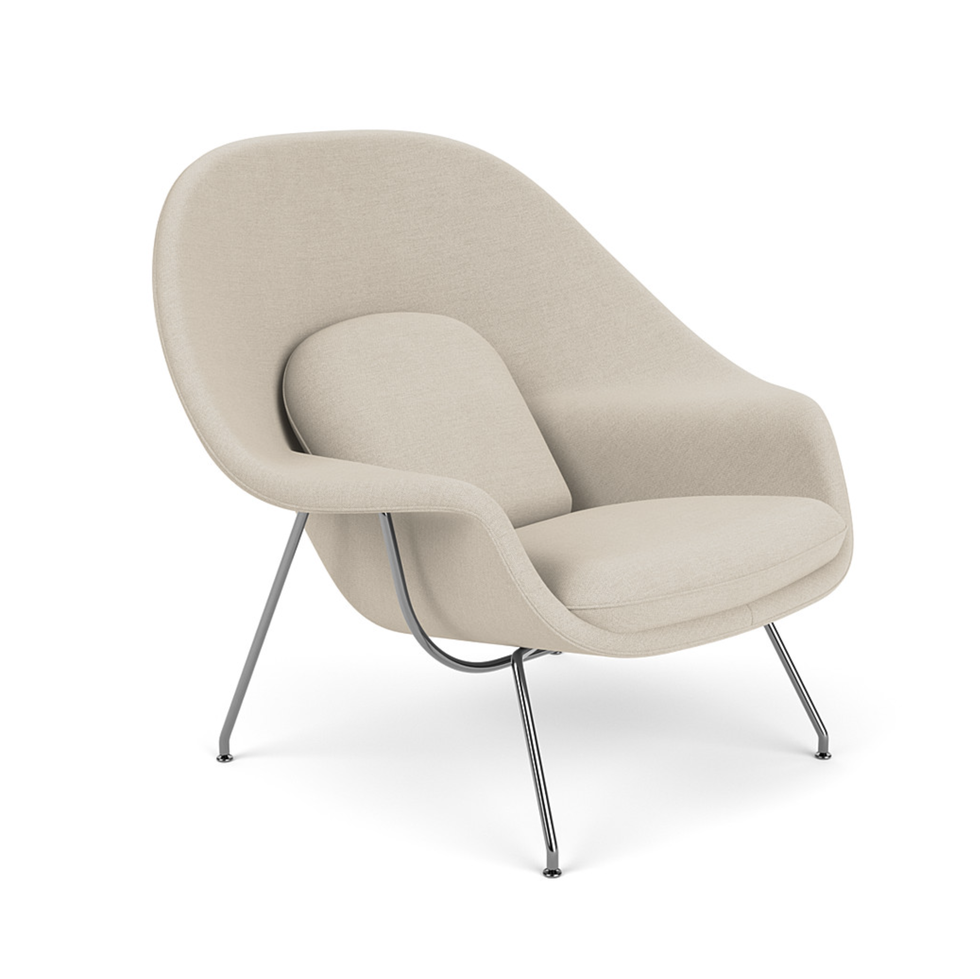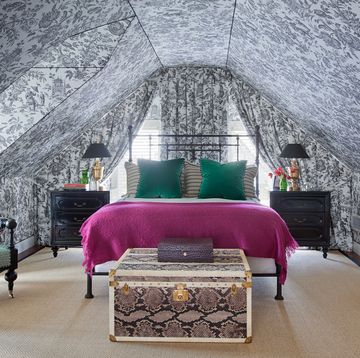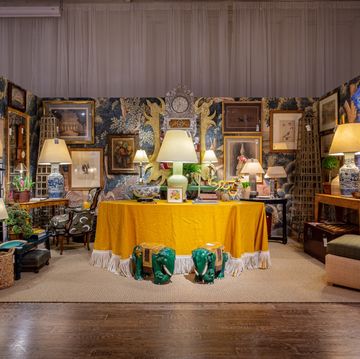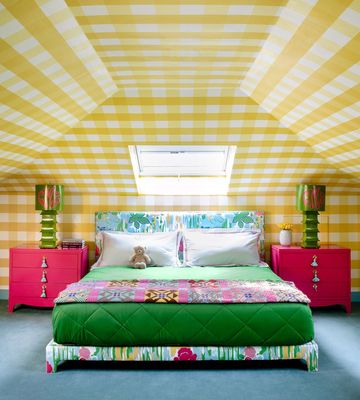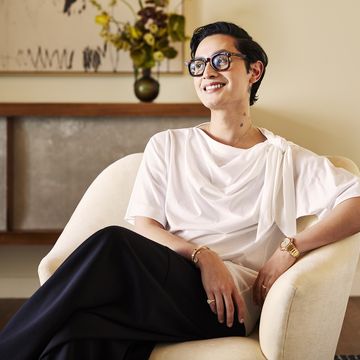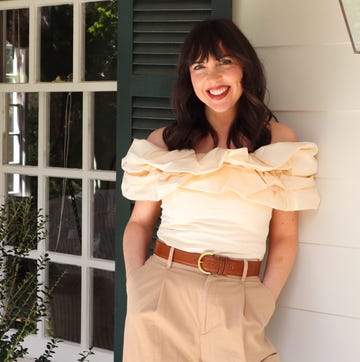Four in every ten people sleep in a fetal position, child's pose is the default yoga pose, and ten out of ten people have an Oedipus complex (just kidding on that last bit, but I'll bet good money that if you fact check me, I'm not too far off). What do these three things have in common? Well, maybe the latter doesn't quite fit in, but the first examples tell us that there's something comforting, relaxing, and safe about things that remind us of our first home: the womb. So it's only natural that one of the most visionary chairs in the design world is inspired by—and named after—this special place. The furniture item in question: The Womb Chair, designed by Eero Saarinen for Knoll in the mid-20th century and still as popular as ever today. Ahead, learn all about the history of the Womb Chair, the designer who created it, and see how it still endures in stylish, contemporary settings.
About the Designer
Saarinen was a prominent Finnish-American architect and industrial designer in the mid 20th century. Even if you've never heard his name, you'd probably recognize one of Saarinen's esteemed monuments and buildings, including the St. Louis Gateway Arch, the MIT chapel, Kleinhans Music Hall in Symphony Circle in Buffalo, New York, and TWA's iconic Flight Center at New York City's JFK airport, to name a few.
He also helped select the official design of the Sydney Opera House, which was designed and presented by architect Jørn Utzon. Most of his more memorable buildings utilize catenary lines (basically just a way to describe the natural curve of an arch, hanging ropes, and parabolic shapes—well, mathematicians might point out minute distinctions, but the visual is the same for us humanities-minded folks!) and thin-shell structures, both of which established themselves as primary characteristics of 20th-century design.
The exterior and interior of the TWA terminal in the 1960s:
As far as furniture, Saarinen is also the designer behind another notable suite of furniture, the now-iconic Tulip collection, whose slim, pedestal design was born of his desire to clean up what he referred to as the "ugly, confusing, unrestful world" caused by a sea of table and chair legs.
The concept for the Tulip grew out of a collaboration with Charles Eames for the Organic Design in Home Furnishings competition in 1940 (they took home the first prize). After this, the chair was taken into production by the Knoll furniture company, which was founded by Florence Knoll, whom Saarinen knew from his days at the prestigious Cranbrook Academy of Art. But, back to our chair of choice today: The Womb.
The Backstory and Construction
In 1948, Florence Knoll commissioned Saarinen to design a chair that was "like a basket full of pillows—something you could really curl up in," according to Knoll. And, thought Saarinen, what better to curl up in than a womb?
The chair was constructed in an ergonomically-minded manner that encourages the user to get comfortable in a variety of positions and to feel fully at ease while doing so. Featuring a shallow bowl-like shape with a wide base but supportive back and softly indented arms, it's easy to see why the chair lends itself to so many activities and use-cases while looking sculptural to boot. Thanks to the slightly reclining back, sitters can be upright with their feet planted on the floor during more formal engagements, or they can back and stretch out with their legs propped onto the accompanying ottoman.
How to Spot a Real One
Today, Wombs are still manufactured by Knoll, with pricing starting at $3,700. Ordering a chair directly through Knoll or a licensed retailer like Design Within Reach is a guaranteed way to ensure it's authentic. If you are trying to make sure a vintage Womb Chair is the real deal, there are a few steps you can take. Start by cross-checking measurements: The measurements of the Womb chair should be 40 inches wide, 34 inches deep, and 35.5 inches high. Of course, a fake reproduction could also have these measurements, but it's a good way to begin the process of elimination. And while today you can customize the frame, choosing between chrome, brass, and black, the older originals will feature seamless tubular steel.
How to Style It Today
The organic curves and architectural silhouette make it a designer favorite across styles, backgrounds, and eras. Because it's such a well-made piece, you can also extend the Womb Chair's lifetime by reupholstering it in new fabrics that give it a fresh look or accommodate a redesign. Plus, having one is like owning a piece of design history. Basically, the Womb Chair will enhance any room it enters, from bohemian backdrops to minimalist spaces and really the home of anyone who misses the simplicity of being a fetus and appreciates a seat that's as cozy as it is chic.
Follow House Beautiful on Instagram.
